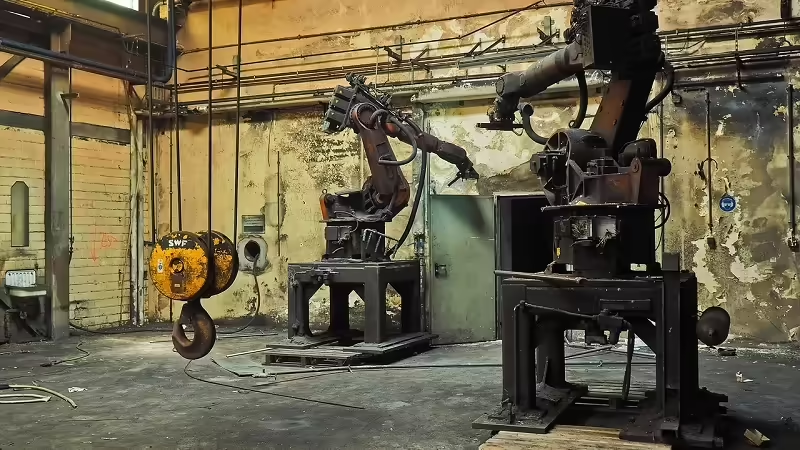
The Vatican Observatory, also known as the Specola Vaticana in Italian, stands as a unique and revered institution at the intersection of faith and science. Nestled within the Vatican City, the world’s smallest independent state, this observatory plays a crucial role in the field of astronomy while symbolizing the Catholic Church’s commitment to the pursuit of knowledge.
A Brief Overview:
Established in 1891 by Pope Leo XIII, the Vatican Observatory has its origins in the Church’s long-standing interest in the cosmos. Its roots can be traced back to the 16th century when Pope Gregory XIII commissioned the creation of the Gregorian Calendar, named after him, which corrected inaccuracies in the Julian Calendar and provided a more accurate means of tracking the Earth’s orbit around the sun.
The observatory’s primary mission is to conduct astronomical research and study the universe, emphasizing the harmony between science and faith. Contrary to popular misconceptions, the Vatican Observatory does not focus on theological matters or astrological predictions but rather on rigorous scientific exploration.
The Importance in Astronomy:
The Vatican Observatory’s significance in the field of astronomy cannot be overstated. Its location in the heart of Rome might seem unusual for an astronomical observatory, but this strategic positioning allows it to carry out crucial research. The observatory operates two main research centers: one at the papal summer residence in Castel Gandolfo, Italy, and another at the Mount Graham International Observatory in Arizona, USA. These locations provide diverse vantage points for astronomical observations.
The observatory’s astronomers are engaged in a wide range of research, from studying the solar system and asteroids to probing the mysteries of distant galaxies and the expansion of the universe. They employ state-of-the-art telescopes and technologies to conduct their investigations, contributing to our understanding of the cosmos.
One of the most significant contributions of the Vatican Observatory is its dedication to the study of meteorites. It houses one of the most extensive meteorite collections in the world, which has been invaluable in unlocking the secrets of our solar system’s formation and evolution.
Beyond its scientific pursuits, the Vatican Observatory is symbolic of the Catholic Church’s endorsement of scientific exploration and the idea that faith and reason can coexist harmoniously. It serves as an inspiration for countless individuals who are passionate about both astronomy and their religious beliefs.
Tracing the Origins and Purpose of the Vatican Observatory
The history of the Vatican Observatory is a compelling narrative that reveals its deep-rooted connection to both the Catholic Church and the pursuit of scientific knowledge. Understanding its origins and raison d’être sheds light on its enduring legacy.
Origins:
The origins of the Vatican Observatory can be traced back to the late 16th century when Pope Gregory XIII reformed the calendar to address inaccuracies in the Julian Calendar. This calendar reform led to the creation of the Gregorian Calendar, which is the one in use today. To ensure the accuracy of this new calendar, Pope Gregory XIII assembled a group of prominent astronomers, including Christopher Clavius, to study and improve astronomical measurements.
This early engagement with astronomy laid the foundation for the Vatican’s ongoing interest in the field. However, the official establishment of the Vatican Observatory occurred much later, in 1891, under the leadership of Pope Leo XIII. He recognized the importance of modernizing the Church’s approach to science and initiated the observatory’s founding to bridge the gap between faith and reason.
Purpose:
The primary purpose of the Vatican Observatory is to conduct rigorous astronomical research and exploration. Contrary to common misconceptions, its mission is firmly grounded in scientific inquiry rather than theological matters. The observatory serves as a testament to the Catholic Church’s commitment to embracing scientific advancements and fostering an environment where faith and science can coexist harmoniously.
The Vatican Observatory’s existence also underscores the Church’s belief in the compatibility of science and religion. It acknowledges that the study of the universe can deepen our appreciation of God’s creation and inspire a sense of wonder and awe. The observatory is a living embodiment of the Church’s dedication to the pursuit of knowledge and its recognition of the value of the natural world.
Over the years, the Vatican Observatory has expanded its reach and impact on the field of astronomy. It operates state-of-the-art telescopes and research facilities both in Italy, at the papal summer residence in Castel Gandolfo, and in the United States, at the Mount Graham International Observatory in Arizona. These strategic locations provide astronomers with access to diverse celestial phenomena and contribute to the observatory’s scientific achievements.
Exploring How the Catholic Church Reconciles Science and Faith through Institutions Like the Vatican Observatory
The intricate interplay between science and faith has been a topic of profound contemplation and discussion throughout history. The Vatican Observatory, an institution firmly rooted in the Catholic Church, serves as a compelling example of how the Church has sought to reconcile these seemingly distinct realms, demonstrating that they can indeed coexist harmoniously.
Historical Tensions:
The history of science and religion is marked by periods of tension and conflict. The Galileo affair, which unfolded in the 17th century, is often cited as a prominent example of such conflict. Galileo Galilei’s heliocentric model of the solar system challenged the geocentric view held by the Catholic Church at the time. This led to Galileo’s condemnation, symbolizing a perceived clash between scientific discovery and religious doctrine.
However, it is essential to recognize that such conflicts were not inherent to the relationship between science and faith. They often arose from misunderstandings, political pressures, and the complex dynamics of the time. Over the centuries, the Catholic Church has evolved its stance on science, emphasizing the importance of seeking truth through both religious faith and scientific inquiry.
The Vatican Observatory’s Role:
The establishment of the Vatican Observatory in 1891 by Pope Leo XIII was a pivotal moment in the Church’s engagement with science. The observatory was created with the purpose of fostering a positive relationship between science and faith, and it continues to exemplify this commitment today.
The Vatican Observatory conducts rigorous scientific research in the field of astronomy, employing cutting-edge technology and collaborating with esteemed institutions worldwide. Its astronomers are driven by the quest for knowledge about the cosmos, recognizing that the study of the universe can deepen our understanding of God’s creation.
One of the key principles guiding the Vatican Observatory is the belief that scientific discovery can enhance rather than diminish religious faith. It emphasizes that both science and faith are pathways to understanding the mysteries of the universe and our existence. By exploring the heavens, the observatory demonstrates that science can complement and enrich religious beliefs.
Harmony in Practice:
In practice, the Vatican Observatory exemplifies the harmony between science and faith. Its astronomers are often devout Catholics who see their work as a form of worship, a way to marvel at the wonders of the universe, and a means of glorifying the Creator. The institution welcomes scientists of all backgrounds and beliefs, fostering a diverse and inclusive environment for scientific inquiry.
Through its work, the Vatican Observatory sends a powerful message: science and faith can coexist without contradiction. It encourages dialogue between scientists and theologians, promoting a deeper understanding of both disciplines. The observatory also engages in educational and public outreach efforts, sharing the excitement of scientific discovery and emphasizing the compatibility of science and faith with a broader audience.
Controversies and Criticisms: Navigating the Historical Controversies and Critiques Surrounding the Vatican Observatory
While the Vatican Observatory is widely celebrated for its contributions to both science and the Catholic Church’s relationship with scientific inquiry, it has not been immune to controversies and criticisms throughout its history. One of the most notable areas of contention has been its name and associations. Additionally, there have been other historical controversies and critiques.
The Name Controversy:
The most significant controversy surrounding the Vatican Observatory is undoubtedly its name. The observatory’s original name, “Specola Vaticana,” meaning “Vatican Observatory” in Italian, raised eyebrows and generated misconceptions. This is largely due to the unfortunate coincidence of its acronym, which is “S.V.” – also known as the abbreviation for “Satan’s Victory” in Latin. This linguistic quirk led to misunderstandings and conspiracy theories, with some believing that the observatory was connected to the sinister.
The naming controversy underscores the importance of careful consideration when naming institutions, particularly when they straddle the realms of religion and science. While the Vatican Observatory’s name is merely coincidental, it has been a source of confusion and has fueled unwarranted suspicions.
Historical Criticisms:
Beyond the naming issue, the Vatican Observatory has faced historical criticisms and controversies, often rooted in misunderstandings and societal contexts
The Galileo Affair: Although not directly related to the Vatican Observatory’s establishment, the historical conflict between the Catholic Church and Galileo Galilei is often associated with the Church’s stance on science. The Church’s condemnation of Galileo’s heliocentric model led to significant criticism. However, the Vatican Observatory has distanced itself from such conflicts by emphasizing its dedication to scientific research and cooperation with the broader scientific community.
Perceptions of Religious Bias: Some critics have accused the Vatican Observatory of conducting research with a religious bias or agenda. These claims suggest that the observatory’s work might be influenced by religious dogma, compromising scientific integrity. However, the institution has consistently emphasized its commitment to impartial scientific inquiry and transparency.
Funding and Priorities: Like many scientific institutions, the Vatican Observatory has faced scrutiny regarding its funding sources and allocation of resources. Critics have questioned whether the Vatican’s financial support might be better directed toward charitable endeavors. The observatory has responded by highlighting its relatively modest budget and the importance of its unique scientific contributions.







